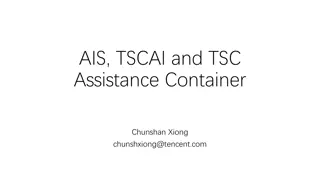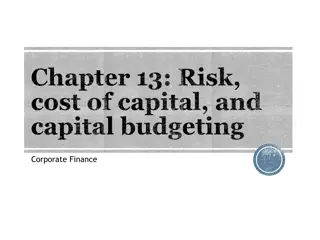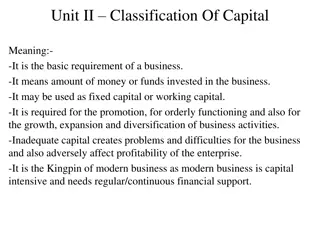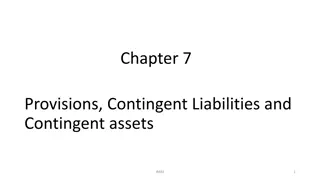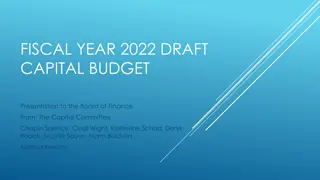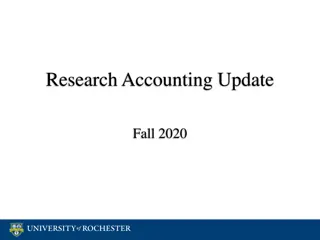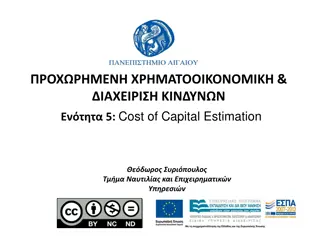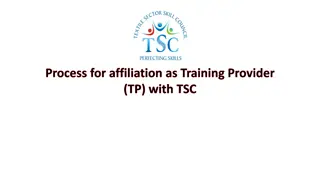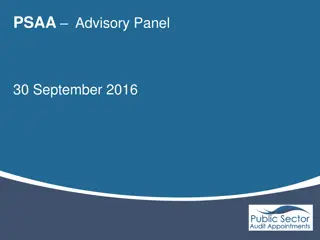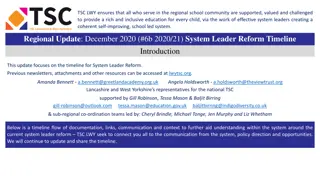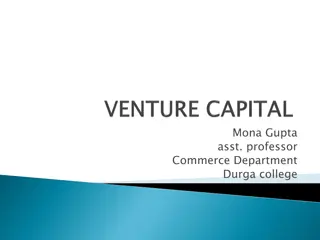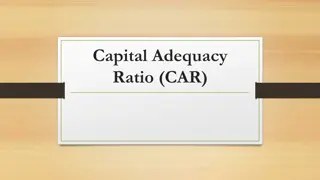Contingent Capital TSC Modifications Panel Meeting Jan 2017 Confidential Discussion
This confidential document outlines key objectives, the need for contingent capital, purpose of modifications, socialisation fund details, and factors to consider. It emphasizes the importance of contingent capital for the smooth running of the market and lays out procedures for funding arrangements, monitoring, and remedial measures. The document also addresses the role of the Market Operator in determining the Socialisation Balance and factors affecting contingent capital drawdown.
Download Presentation

Please find below an Image/Link to download the presentation.
The content on the website is provided AS IS for your information and personal use only. It may not be sold, licensed, or shared on other websites without obtaining consent from the author.If you encounter any issues during the download, it is possible that the publisher has removed the file from their server.
You are allowed to download the files provided on this website for personal or commercial use, subject to the condition that they are used lawfully. All files are the property of their respective owners.
The content on the website is provided AS IS for your information and personal use only. It may not be sold, licensed, or shared on other websites without obtaining consent from the author.
E N D
Presentation Transcript
Contingent Capital TSC Modifications Panel Meeting Jan 2017 Confidential For discussion only 1
Key Objectives Review of questions from December meeting Proposed changes Option 1 Option 2 Option 3 Vote Confidential For discussion only 2
Why is contingent capital needed? Accumulated Charges-Payment Market Payments Market Charges Contingent Capital 3
Purpose of modification Recognise that contingent capital will be required for smooth running of the market Place obligation on Market Operator to seek credit facility Clarify sources of funding for such an arrangement (level of funding to be determined as part of normal revenue control process) RA approval required to change amount of contingent capital Publication of any changes to all participants Funds Available Surplus of Charges over Payments for the billing period Surplus of Charges over Payments as accrued from previous billing periods Contingent Capital remaining Define the Charges and Payments to which the Contingent Capital can apply Remedial measures if Contingent Capital is likely to be exhausted Right to suspend and accrue payments if Contingent Capital is exhausted Confidential For discussion only 4
Socialisation fund? F.21.1.3 The Market Operator shall determine the Socialisation Balance (CBSOCd) for a Settlement Day, d, through applying any adjustments necessary to the Initial Socialisation Balance calculated in accordance with paragraph F.21.1.1, including: (a) adding the amount of any Termination Charge recovered under section J.7.1 of the Capacity Market Code (and, in the event of a failure by a Participant to pay a Termination Charge invoiced under that section, any amount recovered by the System Operators as a result of a call or demand on the Participant s Performance Security under that section) and paid to the Market Operator; and (b) to the extent the Market Operator considers appropriate, adding any accumulated over- recovery by the Market Operator in respect of another charge under this Code that is calculated by reference to a parameter or price set by the Regulatory Authorities on the basis of expected costs. 5
Factors to be considered Extent to which contingent capital is already drawn e.g. if DBC running above or below budget Ability to fill the hole in the hedge Scarcity event price exposure is 2,500 /MWh 500 /MWhr strike price 3,000 /MWhr scarcity price 400 MW unit un-available for 8 hours = 8m 6
Running Order prescriptive? Imperfections charge Contingent Capital Requirement Reduce payments Market rules, bidding code of practice Suspend and accrue only after Contingent Capital is exhausted 7
Transparency DBC is the main driver of contingent capital draw down TSO s monitor DBC continuously Standing agenda item for fortnightly meeting with RA s Can include trend alert Decision required to send out Market Message High frequency public reports Illustrate impact of individual participant's bidding behaviour Short term fluctuations may be misleading Early warning to the RA s may trigger notification to industry 8
Forecasting Accuracy Difficult to forecast wide error bars Tariff setting on the worst case scenario? Tariff s are subject to regulatory approval Contingent capital ~ insurance Tariff Insurance has a cap Tariff Contingent Capital Contingent Capital TSC TSC 9
End 10
Change in key assumptions SEM v I-SEM Category Change in I-SEM Impact Capacity Capacity auction process in I-SEM compared to a pot set at the beginning of a year in SEM Capacity is self funded (pass through) on a monthly basis in SEM compared to a Tariff mechanism in I-SEM Monthly payments receipts in I-SEM Seasonal impact in Year 1 as Go Live is May-18 which is coming into the trough summer months. Payments made on a straight line basis but receipts recovered on a demand profile basis. Likely to result in a cumulative deficit build up during the summer months which should unwind during the winter months. This is a Year 1 funding risk only as the tariff year normally starts in Oct which is coming into peak winter months. Constraints & Residual Error (REVLF) Change in market rules Not required to bid on SRMC basis Participant will be paid the higher of bid price or market price for Constraints REVLF moving from pass through to tariff mechanism in I-SEM Market Interconnector Ramp rate Physical Expected increase in volatility in imbalance price due to change in bidding rules Market risk Intrinsic risk associated with the introduction of a new market Extremely difficult to quantify. Risks include: 1. Market behaviour 2. Design risk Remedy period Confidential For discussion only 11
Estimate of how much is needed SUMMARY OF COSTS Estimated potential annual gross cost I-SEM m Scenarios in I-SEM Estimated potential funding exposure Cost Volume Risk Other Risk Recovery of cost - mechanism Year 1 Year 2 SEM I-SEM Tariff Tariff Tariff Capacity cost Constraints cost Residual Error cost Interconnector Ramping 300 200 40 30 2% 2% 2% 2% 2% 6 3 9 Pass thro' Tariff Pass thro' 33% 15% 10% 70 7 4 0 52 5 3 0 122 12 6 1 N/A Tariff Tariff Tariff Market Operator charges 18 149 Total estimated cost exposure 588 87 62 12







